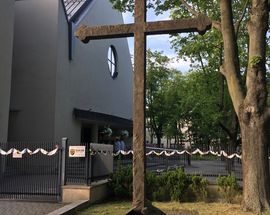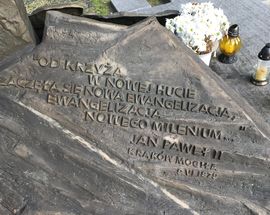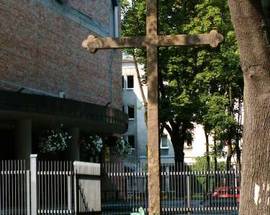Nowa Huta Cross & Riots
And the cross? It stood, though the planned school was nonetheless built on the original church site beside it as armed officers guarded the cross day and night. By the 1970s the Nowa Huta Cross was in sorry shape, and looking ready to keel over from rot and decay – an idea which greatly pleased the authorities who assumed that when it did their troubles would be over. Not so. A massive new oak cross was secretly prepared and when the opportunity to instal it arose in the late 70s as the officers were away from their posts for May 1st celebrations (Communist Labour Day), it was erected on the site of the original. It would later be replaced by a metal cross and in 2007 by the bronze cross which stands today bearing the inscription, “To John Paul II, the Defender of the Cross – the grateful people of Nowa Huta.” The city, meanwhile, would remain without a church until 1966 when Arka Pana was built a half kilometre away (though it would be prevented from being officially consecrated until 1977). In 2002, the small Church of the Sacred Heart was consecrated beside the Nowa Huta Cross and adjacent school.






Comments